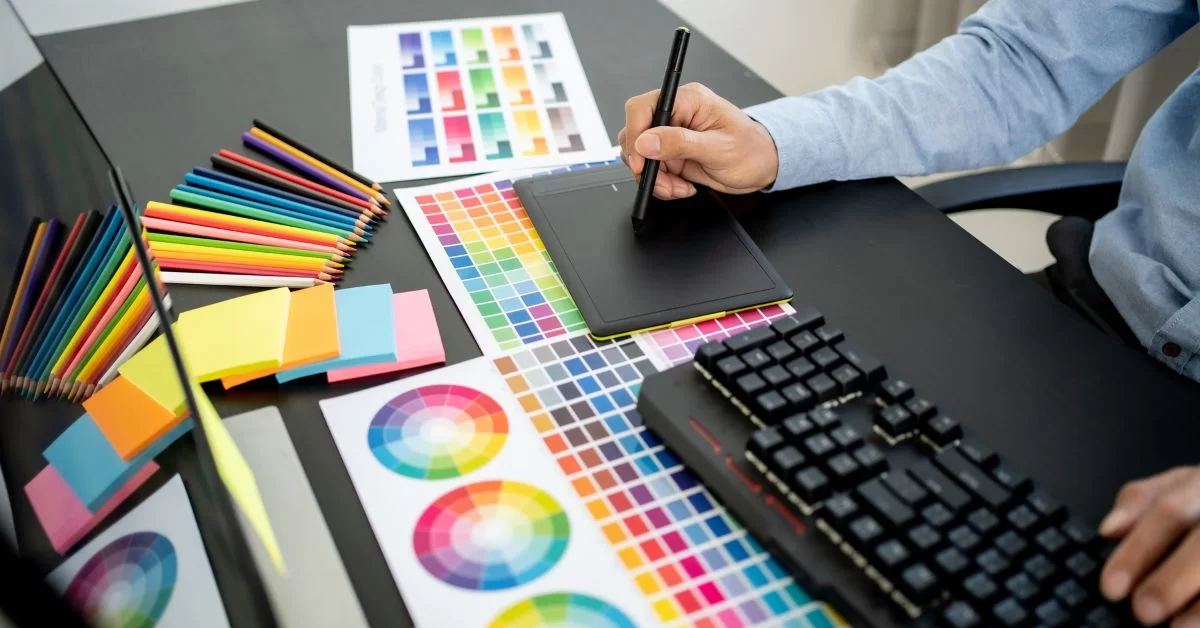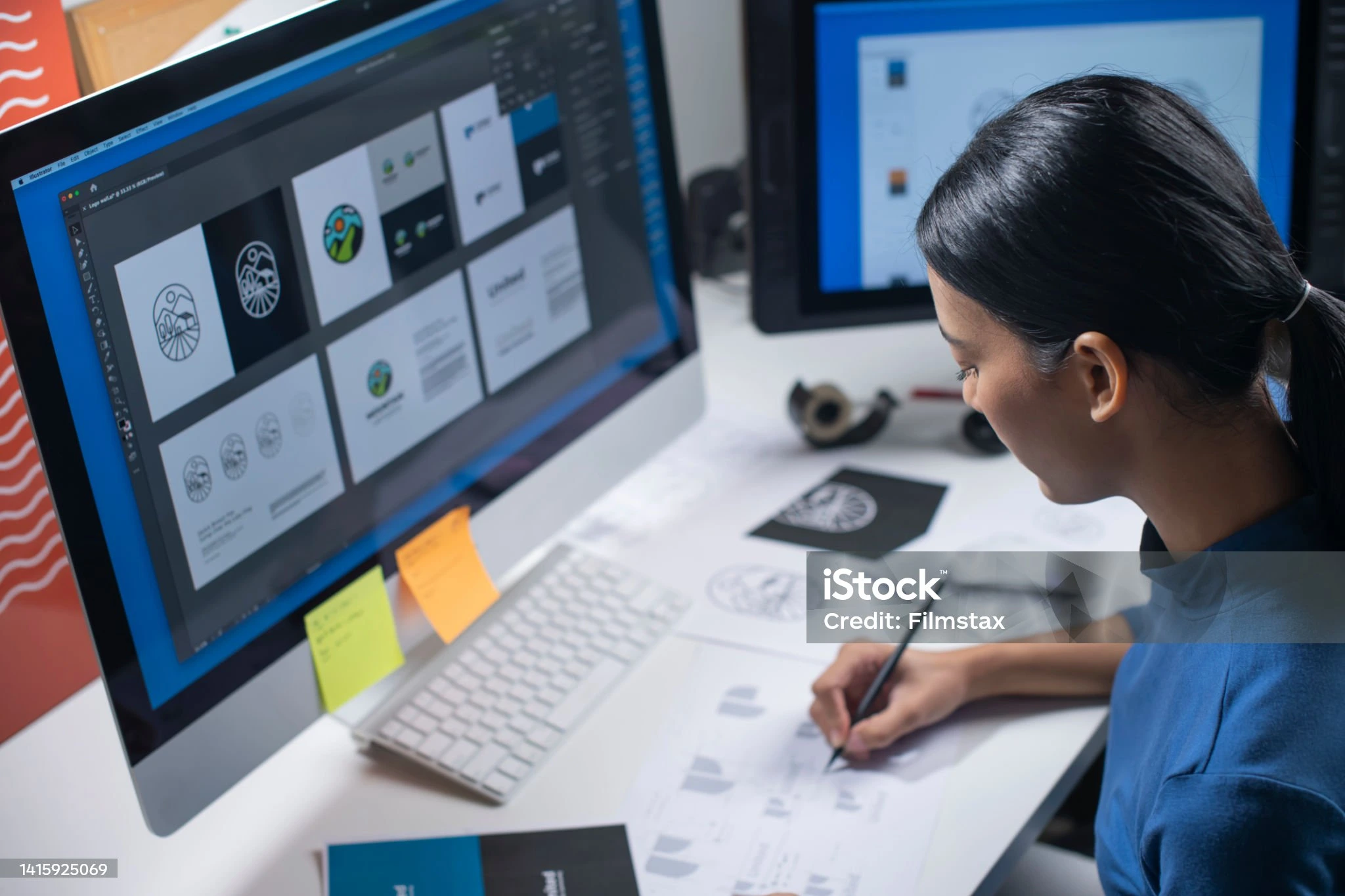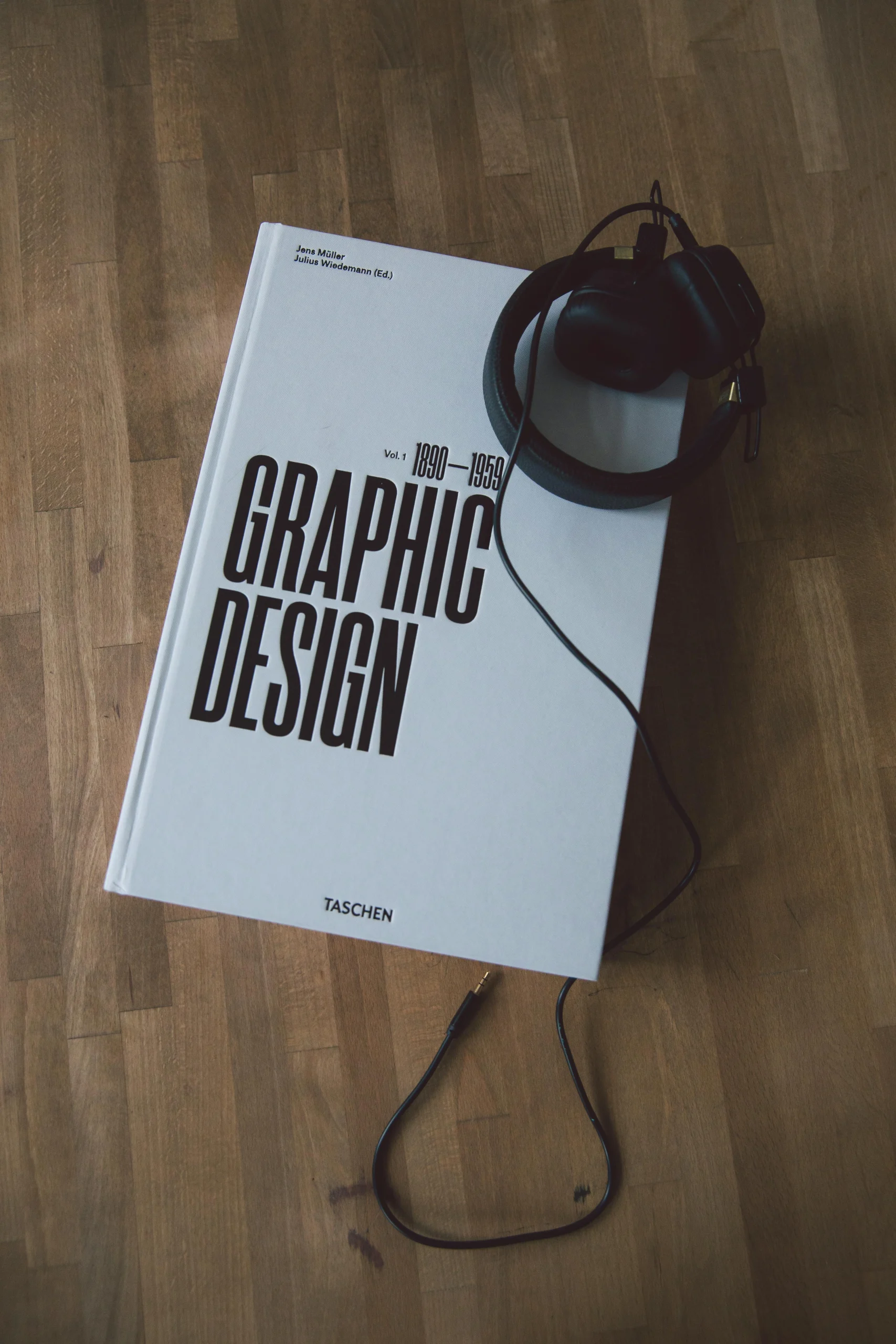Graphic design is a dynamic and creative field that blends art, technology, and communication to visually express ideas and messages. As a graphic designer, you have the opportunity to shape how businesses, brands, and products are perceived by crafting visuals that tell compelling stories. Whether it’s designing logos, creating advertisements, developing digital layouts, or packaging products, graphic design plays a crucial role in a wide range of industries. If you’re passionate about creativity and problem-solving, learning how to become a graphic designer could lead you to an exciting career where you can use your artistic talents to influence the world around you.
- Graphic designers use a variety of skills and tools and work in several exciting industries.
- A graphic designer is a creative professional responsible for creating visual content to communicate ideas, messages, and emotions effectively.
- Becoming a graphic designer is an exciting journey that combines creativity, technical skills, and a passion for visual communication.
- A skilled graphic designer helps organizations visually express their identity, making them indispensable in today’s competitive, design-driven world.

2.What’s a graphic designer?
Table of Contents
Graphic designers use specialized software and tools to create visual content that communicates messages clearly and effectively. They are needed in every industry, from marketing and advertising to software development and entertainment, to craft designs that engage audiences. If you choose to become a graphic designer, you can work on a variety of projects such as logos, website layouts, advertisements, and video content. This career path offers endless creative opportunities to shape how businesses and brands connect with their audiences. With the growing demand for visual content, graphic design is a field that provides both creativity and stability.
- A graphic designer is a creative professional who uses visual elements to communicate messages, ideas, or concepts to an audience
- Combining artistic talent with technical skills, they craft engaging designs for a variety of mediums, including logos, websites, advertisements, packaging, and brochures.
- Graphic designers create visual concepts and designs for print and digital media, collaborating with clients to meet specific project needs. They develop layouts and templates that effectively communicate the intended message across various platforms.

3.Why is Graphic Design an Essential and High-Demand Career?
The rapid expansion of the digital world has created a growing demand for professionals to become a graphic designer.
Growth of Digital Media :
- . Graphic designers are essential for creating websites, social media graphics, email templates, and online advertisements that help brands stand out in the crowded digital space
- As more businesses and brands move online, the need for eye-catching and functional digital content has grown for our growth.
Growth of e-commerce:
- The emotional materials that stand out and drive conversions, fueling demand for skilled designers.
- . Increased demand for visual content: As industries across the globe rely on visual communication, skilled graphic designers are needed to create effective and engaging content.
Versatility Across Industries:
- Graphic designers are needed in marketing, technology, entertainment, and more. By choosing to become a graphic designer, you can work in a variety of fields, creating everything from logos to website designs and promotional materials.
- The versatility of graphic design allows professionals to explore diverse projects, from branding to UI/UX design. If you become a graphic designer, you’ll have the chance to work on engaging and innovative visual content that impacts businesses and audiences worldwide.
Web and app design:
- With more websites and mobile apps being developed, graphic designers are required for UI/UX design, layouts, and visual elements.
- As businesses continue to expand their online presence, the need for visually appealing and user-friendly websites and apps grows. By choosing to become a graphic designer, you can specialize in creating stunning web and app designs that enhance user experience and drive engagement.
Social media content:
- Designers create posts, stories, ads, and video content to help brands stand out on platforms like Instagram, Facebook, and TikTok
- Social media platforms thrive on eye-catching content, and businesses need graphic designers to create standout visuals that capture attention and drive engagement. By choosing to become a graphic designer, you can specialize in designing posts, ads, and banners that enhance a brand’s presence online.

4.What does a graphic designer do?
Graphic designers are essential in crafting visual content using advanced software and devices. They contribute to every industry, including marketing, advertising, software development, and entertainment, by designing eye-catching and functional visuals. Whether it’s creating brand logos, dynamic posters, engaging website banners, or designing layouts for apps, their work is vital to effective communication. The role of a graphic designer is versatile, extending to creating video transitions, visual effects, and even promotional materials. If you’re passionate about creativity and technology, becoming a graphic designer can open doors to various opportunities where your design skills can make a lasting impact.
Research and gather information:
- Collect relevant data to understand the project’s objectives and target audience, ensuring the design meets the needs
- Successful graphic designers must research and understand client objectives before starting any project. By choosing to become a graphic designer, you’ll develop the skills to gather key insights that shape the design process and ensure your visuals align with client goals.
Conceptualize new designs:
- As a graphic designer, brainstorming and developing fresh ideas is essential for creating innovative visuals that capture attention across various media. Whether it’s for websites, social media, or print, your creativity plays a key role in crafting engaging designs that resonate with audiences. By choosing to become a graphic designer, you’ll have the opportunity to bring unique concepts to life and push the boundaries of visual storytelling.
- Graphic designers play a key role in brainstorming and conceptualizing fresh, innovative ideas for new designs. By choosing to become a graphic designer, you’ll gain the skills to transform abstract ideas into compelling visual concepts that communicate a brand’s message.
Collaborate with team members:
- Work closely with copywriters, editors, photographers, and other team members to ensure a cohesive design.
Pitch ideas and present sketches:
- Present design concepts and rough drafts to project managers or creative directors for feedback and approval.
Choose appropriate design elements:
- Select fonts, color schemes, and other visual components that align with the project’s goals and branding.
Typeset copy and arrange images:
- Organize and format text and visuals to prepare designs for publication or production.
Self-edit and evaluate work:
- Review and refine designs before submission to ensure quality and consistency.
Maintain and upgrade tools:
- Regularly update and manage licensed design software and tools to ensure efficiency and access to new features.
Learn new technologies and software:
- Stay current with evolving design software and technologies to improve design techniques and capabilities.
Stay updated on trends:
- Follow design trends and incorporate them into work to create visually appealing and market-relevant designs.

Five Powerful Steps to Mastering Your Path as a Graphic Designer
Here are five essential steps to becoming a graphic designer, each of which will guide you through the process of building a successful career in this exciting and ever-evolving field, blending creativity, technical skills, and real-world experience to make a lasting impact in the design world:
- Learn Design Fundamentals:
Before diving into advanced design tools or tackling complex projects, it’s crucial to first learn the fundamentals of design. These foundational principles form the backbone of all good design, regardless of style or medium.
Understanding key concepts like typography, color theory, composition, and layout is essential for creating visually appealing and effective designs. Whether you’re working on logos, websites, or print materials, a strong grasp of these basics will ensure your work is both aesthetically pleasing and functional.
As you develop your skills, you’ll be better equipped to make informed design decisions and solve visual problems creatively. By mastering the fundamentals, you’ll be well on your way to becoming a graphic designer who can tackle any challenge with confidence and skill.
Understand key principles such as color theory, typography, layout, and composition. A solid foundation in design theory is critical to creating visually appealing and effective designs.
- Master Design Software:
Learn to use industry-standard tools like Adobe Photoshop, Illustrator, and InDesign. These tools are essential for creating professional designs across various media.
- Build a Portfolio:
Your portfolio is one of the most important tools in your journey to become a graphic designer. It showcases your skills, creativity, and versatility, allowing potential clients or employers to see the range and quality of your work.
Start by curating a collection of your best projects—whether personal, freelance, or school-based—focusing on a variety of styles and mediums that demonstrate your capabilities. A well-organized portfolio not only highlights your design skills but also tells a story about your design process and problem-solving abilities.
As you grow and take on new projects, continue to update your portfolio with fresh, relevant work that reflects your evolving style. An impressive portfolio is your ticket to standing out in a competitive field and ultimately helps you become a graphic designer that clients and companies want to hire.
To become a graphic designer, it’s important to create a collection of your best work that shows off your skills and style. A strong portfolio with a variety of projects, such as logos, brochures, and digital designs, is key to attracting clients and employers.
Your portfolio acts as a visual resume, highlighting your creativity, technical skills, and versatility. By including different types of projects, like branding, web design, or print media, you make it easier to land job opportunities or freelance work..
- Gain Experience:
Gaining hands-on experience is crucial if you want to become a graphic designer who stands out in the industry. While education and theory are important, real-world practice allows you to apply your skills, refine your technique, and learn how to work with clients and deadlines.
You can start by taking on freelance projects, internships, or collaborating with others on personal or group-based design work. Each project you complete offers valuable lessons, whether it’s understanding client feedback, managing multiple revisions, or learning how to balance creativity with practicality.
The more experience you gain, the better equipped you’ll be to handle diverse design challenges, and your portfolio will grow with more professional projects to showcase. Ultimately, hands-on experience is key to building confidence and expertise as you continue to become a graphic designer ready to thrive in the competitive creative world.
Work on real-world projects, whether through internships, freelancing, or personal projects. Practical experience will help you refine your skills and develop a deeper understanding of client needs.
- Stay Current and Network:
To become a graphic designer who remains competitive and relevant, staying current with design trends and networking within the creative community is essential. The design world evolves rapidly, and new tools, techniques, and trends emerge regularly.
By continually learning about the latest software, design trends, and innovative practices, you can ensure that your work stays fresh and aligned with industry standards. Networking is equally important—attending design events, joining online communities, and collaborating with other creatives opens doors for new opportunities, ideas, and collaborations.
Engaging with other designers not only helps you stay inspired but also exposes you to different perspectives and skills that can enhance your own work. Networking and staying current are powerful ways to accelerate your growth as a designer and are vital steps in your journey to become a graphic designer who thrives in today’s fast-paced creative industry.
Continuously update your skills by learning new design trends, software, and techniques. Networking with other designers and industry professionals helps you stay informed and discover new opportunities.

In conclusion, becoming a graphic designer is an exciting and rewarding career. By learning design basics, mastering software tools, building a strong portfolio, and gaining experience, you can develop the skills needed for success. Staying up-to-date with trends and continuing to learn will help you grow in this ever-changing field. Whether you work for a company or as a freelancer, graphic design offers many opportunities to use your creativity and make a real impact. Stay passionate and keep pushing your skills to reach your goals.

Pingback: What is Digital Marketing Definition & Key Strategies in2025
4433lf